- Home
- Zadie Smith
Feel Free: Essays Page 31
Feel Free: Essays Read online
Page 31
• • •
What is the true role of the autobiographical in fiction? For years I thought of it only as a kind of weakness, a failure of imagination, something a little embarrassing. But perhaps there are other, more positive ways to look at it. “Happy is the novelist,” claims Nabokov, “who manages to preserve an actual love letter that he received when he was young within a work of fiction, embedded in it like a clean bullet in flabby flesh and quite secure there, among spurious lives.” Maybe all novels have these “clean bullets” of lived experience buried in them: maybe that’s the reason we write them in the first place, whether we realize it at the time or not. Nabokov was certainly very happy to think of his fiction as a place where the delicate butterflies of his personal experience might be preserved, pinned and mounted for eternal appreciation. When you read him you sense his delight at smuggling in a certain well-turned ankle, remembered from St. Petersburg, or a dead lover’s fox-fur, or the multicolored windowpane from his childhood estate. I am myself less happy considering my fiction as a vehicle through which I force personal memories upon a wider public, like a Facebook bore who makes you go through all their old photos: I feel that way indulgence lies. Between the clean bullet of my memories and the spurious lives I depict, I feel—I hope—that my fiction is focused primarily on those spurious lives, that is, on the fiction itself. For me fiction is a way of asking: what if things were other than they are? And a central component of that is to ask: what if I was different than I am? I have always found the practice of writing fiction far more an escape from self than an exploration of it. Yet when I read other people’s novels I make the same mistakes as most civilian readers: I confuse Portnoy with Roth, and Humbert with Nabokov and Janie with Zora Neale Hurston. Call it “The Autobiographical Error.” And if a friend and peer writes a novel set in space among a race of monopods called the Dinglebots, I am still liable to think to myself: Yes, yes, very well, I see what you’ve done there with those Dinglebots—but isn’t this all about your recent divorce? I notice, too, that I make this mistake most consistently when I read first-person narratives. But rather than expressing contempt for this autobiographical instinct in readers and in myself I want to try to find a place to reconcile the “I-who-is-not-me” of the writer with the “I-whom-I-presume-is-you” that the reader feels they can see. Writers always claim it’s all fiction and readers always suspect that it isn’t. Who’s right?
I think to appreciate fiction fully it helps to conceive of a space that allows for the writer’s experience and the reader’s simultaneously, a world in which Portnoy is at once entirely Philip Roth and not Philip Roth at all. That sounds like an impossible identity, but literature, for me, is precisely the ambivalent space in which impossible identities are made possible, both for authors and their characters. What I find most striking about Portnoy’s Complaint is that at the time of its composition both Portnoy and his author were each in their own way burdened with an impossible identity. To deal with Portnoy first: in 1969, though it was possible to go to the moon, and possible to imagine nuclear annihilation, it was not possible to be Portnoy in the world. At least, it was not possible to be Alexander Portnoy in Newark. No, you simply could not be a foul-mouthed, sex-obsessed, fundamentally unserious and unpious, masturbating, liver-fucking, mother-hating young Jewish boy from Newark. It’s easy to forget this fact now that Portnoy finds himself safely tucked up beneath the prestigious covers of the Library of America. But look over the old press clippings and you’ll be reminded of just how impossible he seemed at the time. Man, he really caused a riot. Yet these days this foul-mouthed son of Newark is considered as American and beloved as apple pie. He is on college courses and top-ten lists. Jewish mothers buy copies of him for their Jewish sons as birthday presents; grandmothers buy the audiobook in fits of nostalgia. Portnoy was not Roth and he was not real, but in him is enshrined a genuine Rothian freedom, created by Roth, once impossible, now fully realized, a freedom which anyone can now easily access. You don’t even have to read the book: you are already living in the world that Portnoy touched and changed. By saying “I” in a certain mode, an ambivalent, fictional mode, Roth made possible through Portnoy a new kind of “I” in the world, a gift of freedom that was taken up by a generation of writers, millions of readers and eventually a global community. This gift is sometimes confused with the far duller idea of an artist offering his readers some form of personal role model. I do think art can and often does offer models of behavior, or at least suggests possibilities of behavior, but I dislike the aspirational tone of “role model.” Roth’s gift with Portnoy was large precisely because it had no aspirational element and no precise directions. Like any good gift, the less strings we find attached to it the better. The offer was not: You, too, can be like Portnoy. The offer was: Portnoy exists! Be as you please.
A few minutes ago I suggested that Philip Roth as much as Portnoy had an impossible identity, back in 1969. I call it impossible because Roth wanted to be “A Great American Novelist,” which was, at that particular moment, something a Jewish novelist could not yet be. But from Goodbye, Columbus on, he set about furiously writing himself out of that impossibility, a further gift of freedom so large and effective that it seems now like a natural bounty, and people are liable to forget he is responsible for it at all. Alongside Saul Bellow, Roth utterly dissolved the impossible identity of the Jewish-hyphen-American-hyphen-novelist, until the idea of a Jewish man being a Great American Novelist seems as natural and obvious to us now as a California redwood rising up out of the soil. Later a new generation rebelled against the freedom thus proffered: they didn’t believe in “Great” or “American” or even “Novel.” Some wanted to replace the secular Jewish world Roth depicted with the sacred Jewish world once more. Others wanted to overwrite his vision of male sexuality run amok with a female counter-narrative. This is all to the good. Freedoms calcify and have to be rejected and/or adapted by the young. And soon the young in their turn will seem old and paternalistic to the kids rising up under them, and the whole Oedipal battle will begin again. But none of this can devalue permanently any particular writer’s gift of freedom, and Roth’s has been larger than most. Through a dazzling array of literary avatars, he complicated, confused, ridiculed, celebrated, built and destroyed so many of our ideas of what a human life is, what’s important in it, and what ridiculous, what beautiful and what ugly, what serious and what fundamentally funny. For me the final and greatest lesson of his work is to insist on the fictional status of identity itself. For all Roth’s men are essentially “self-made.” They talk themselves into a particular existence. And they can talk themselves out of it, too. Nothing is sacred, they are beholden to nobody, fearless, as Roth himself as a writer has been fearless. He’s written things down that seemed unsayable, impossible, and in taking this freedom for himself, intentionally or not, passed the freedom down.
To speak personally, I know that I stole Portnoy’s liberties long ago to address my own project. He is part of the reason, when I write, that I do not try to create positive black role models for my black readers, and more generally have no interest in conjuring ideal humans for my readers to emulate or use as examples for their children. I took from Roth the liberty to create free characters behaving with freedom, independent of obligation, some good, some bad, some admirable, some perverse, some downright evil. I am trying to counter the narrow path with the wide-open road. For what is impossible about any real-life identity is its narrowness. In my case, I understood myself, as a child, to be a third, impossible option in an otherwise binary culture: neither black nor white but both. There are many negative responses a child can have to this feeling of impossibility: anger, sadness, despair, confusion. But there is another more interesting response that I think of as inherently creative, and I believe it is at the root of the reason so many writers will tell you that they felt in some way alienated as children. When you are not at home in your self, as a child, you don’t experience your self
as “natural” or “inevitable”—as so many other people seem to do—and this, though melancholy at the time, can come with certain distinct advantages. Not to take yourself as a natural, unquestionable entity can lead you in turn to become aware of the radical contingency of life in general, its supremely accidental nature. I am Philip, I am Colson, I am Jonathan, I am Rivka, I am Virginia, I am Sylvia, I am Zora, I am Chinua, I am Saul, I am Toni, I am Nathan, I am Vladimir, I am Leo, I am Albert, I am Chimamanda—but how easily I might have been somebody else, with their feelings and preoccupations, with their obsessions and flaws and virtues. This to me is the primary novelistic impulse: this leap into the possibility of another life. And from this position comes the ability to see the self you happen to be from a certain, often ironic, distance, the gap for example that Philip Roth established between himself and his Portnoy. There is a freedom in this, primarily for the writer. I’m one of these people who have come to believe writing is a kind of psychological condition, forged in childhood, with a strong element of compulsion to it. But writers who are compelled to pursue this freedom for themselves almost always inadvertently confer it on others. The rigidity with which I considered my own identity in childhood, for example, was the consequence of a failure of imagination, both my own and others’. Practically the only star I had to steer by was that old, worn-out, paper-thin character the “tragic mulatto,” whom I found in bad novels and worse movies. But then I found Hanif Kureishi, whose own impossible identity—Pakistani and British, Straight and Gay—he transformed into his delightful first novel, The Buddha of Suburbia, which I in turn read and felt something impossible loosen itself within me. It was a gift of freedom.
It seems to me that people experiencing impossible identities—who find it impossible to imagine being, for example, Muslim and gay, or Jewish and obscene, or black and nerdy, or female and perverse, or Protestant and Irish—can build up a terrible tension within themselves. The beauty of Portnoy is how he resolves this tension in laughter and in prose, but we know that in the real world impossible identities are too often resolved in violence. The rope inside us is pulled so taut, strung between such apparently incompatible places, that we feel we must cut it. Most often this violence is internal: we kill some part of ourselves. We ignore that we are gay, or smart, or masculine, or melancholy, or scared. We cut that bit out and live in a mutilated way. That is an intimate tragedy. But worse are the occasions when this internal violence faces outwards and becomes lethal to other people: when we project the “other” we are onto another human and hurt or even kill them in proxy. How many of the young men setting bombs on streets around the world turn out to be also living what they perceive to be doubled and impossible identities: as simultaneously gay and straight men, pious believers and raucous street kids, Westerners and Easterners? Of course it’s a naive and romantic fool who offers the novel or any art form as the cure-all for this form of internal confusion. And novels written with this explicit intention are guaranteed to be a great bore. I certainly don’t write as a public service. But I am aware, at least as a reader, that remarkable acts of art-making—bold, perverse, unbeholden, free—have had the side effect of changing the weather in a country, in a people, at a certain historical moment, and finally in me, conferring freedoms for which I am now very grateful. And perhaps the most autobiographical part of my writing is the barely conscious awareness, deep down, that a part of me is always writing backward to the confused brown girl I once was, providing the books I wished back then that I could read.
2. The Reality Effect
It sounds very silly but through twenty years of using only the third person I almost completely forgot what the first person was for. When my students tried to use it I often found myself giving them one of my very British half-aesthetic, half-ethical lectures, about the limitations, as I saw it, of only saying “I.” What about other characters? What about facing outwards? But the moment I started writing in the first person myself I realized how wrong I’d been. I saw how this form utilizes something so fundamental, which we experience every day talking to our children and partners and friends and enemies, overhearing the conversations of others, in almost all our human interactions: the latent power of the anecdote, of testimony, of confession, of witness. Once upon a time there lived is the most basic example of the third-person setup, but how much work one has to do to convince your reader of its reality! She will have so many questions. Once upon a when, exactly? Where? Who were these people? Why are you telling me about them? On what authority do you tell me this story? Now compare that to: Something happened to me yesterday. The reality effect is so strong, immediate. All questions dissolve. Why am I telling you this? Because it happened to me! What a freedom I felt, constructing this entirely false autobiography which still, at every turn, sounded real, because I had allowed myself to write “I” and in this way falsely insist on its truth. Quite a lot of the time as I wrote this book I felt a little scandalous. In what other medium are you allowed to lie for four hundred pages and present it as bare-faced truth? And at the same time my relationship with my reader had a new frisson. If before, in our long history, she had suspected my novels were merely me disguised, what would she think now? How many times can you say “I” and still ask a reader to believe that this is still the I-who-is-not-you?
Well, this all felt very fresh and exciting to me, but of course Philip Roth has been teasing out the potential consequences of this fraught dynamic for forty years. In our minds Roth the man and his many ink-and-paper avatars are inextricably entwined: it’s common for readers to consider the term “fiction” here to be not much more than a publishing-world fig-leaf employed to obscure personal revelation. Knowing this, part of the thrill and dread of writing in the first person, for me, was precisely the realization that once it was published I would have to answer to this fictional self, as Roth has had to do for his fictional selves so many times: Did I share her views, her biography, her history, her mother? I could project myself into the future and see exactly how tiresome I would find these questions once the book was published, and yet it didn’t stop me, I kept on doing it, I think because the reality effect—which is, in the end, a literary effect—is such an incredibly enjoyable tool to employ while you’re using it. You have your reader where you want them, in the palm of your hand, and the whole test, the whole battle of fiction—to make them believe—feels more possible than ever. As distressing as it surely must have sometimes been for flesh-and-blood Roth to be confused with Zuckerman or Portnoy or Mickey Sabbath I now see more clearly why he did it. The first person opens up the delicious possibility of telling someone a true lie: Let me tell you what happened to me.
It has been said a lot recently in literary circles that readers have tired of Once upon a time there lived and can now only read work that speaks directly of reality, that says only: Let me tell you what happened to me. (Once upon a time there lived feels too hard, too distant, appears to require too much effort, is too difficult to believe.) People living in a twenty-four-hour news culture have enough real stories to occupy them without being bothered with fairy-tale lands and imagined folk. Those who take this view offer as evidence the great success of writers like Karl Ove Knausgård and Elena Ferrante, memoir-novelists like Ben Lerner and Sheila Heti, and straight-up, non-fiction personal-essay sensations like Ta-Nehisi Coates and Lena Dunham. I love all these writers but not because I find them more real. I think the argument itself is somewhat infantile and mistakes the reality effect for actual reality. I have always believed, for example, that writers of memoir are involved in the exact same practice in which I am engaged: the arranging of sentences on a page and the creation of effects. I’m afraid I do not believe that Karl Ove Knausgård miraculously remembers conversations from his childhood when I know I could not precisely reconstruct a conversation I had yesterday with my husband. It’s all writing. The reality effect is one among many literary effects and can be employed to various degrees; it utilizes the flesh-and-bl
ood self, mining it for information, stripping it for parts and re-presenting it. But that flesh-and-blood self can never actually appear on the page. That may seem a very obvious thing to say but I think many of us, bamboozled by the reality effect, tend to forget it. All that can ever appear on a page are verbs and adjectives, nouns and adverbs, and that powerful pronoun “I.” Philip Roth is not and never can be Portnoy because it is not possible to render a real human being even partially in sentences. Echoes, shadows, inversions, fragments—this much writing can do. But the whole enchilada lives on a different plane. Roth’s singular achievement was to use his reader’s erroneous beliefs about the relationships between characters and their authors as one of his literary effects. Where Roth and Zuckerman join and part, how much of young Philip is in young Portnoy, whether that there is Roth’s marriage or not, or Roth’s lover or not—these questions are unanswerable in prose, but the provoking of them in the reader’s head is a powerful hermeneutic experience. Roth’s work plays with the reality effect and thus with your interpretive sensibilities. When Mickey Sabbath masturbates over his lover’s grave, who are you offended by? Roth? Mickey? Who do you want to defend? His dead wife (who is made of sentences)? Women in general? Men in general? In the real world we often want our judgments and moral decisions to be swift and singular and decisive. Fiction messes with our sense of what it is possible to do with our judgments. It usefully suspends our great and violent desire to be in the right on every question, and creates an unholy and ungovernable mix of the true and the false. It’s the place where things are true and not true simultaneously: the ultimate impossibility. I think great novels free us into an understanding that the tension between true/not true might in fact be livable, might not have to be judged and immediately neutralized in the court of public opinion or in the oppressive conservatism of our social lives. A novel is fundamentally without real-world consequences, or so we think as we read them, and we can be bold in the spaces they create, braver, more able to tolerate our own uncertainties.

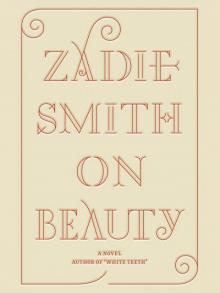 On Beauty
On Beauty Nw
Nw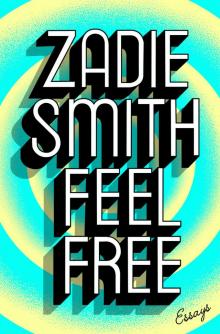 Feel Free: Essays
Feel Free: Essays The Book of Other People
The Book of Other People White Teeth
White Teeth Changing My Mind: Occasional Essays
Changing My Mind: Occasional Essays N.W.
N.W. Swing Time
Swing Time The Embassy of Cambodia
The Embassy of Cambodia The Autograph Man
The Autograph Man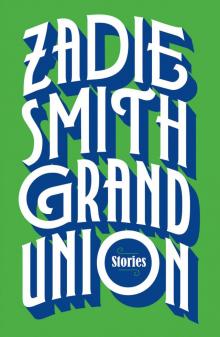 Grand Union
Grand Union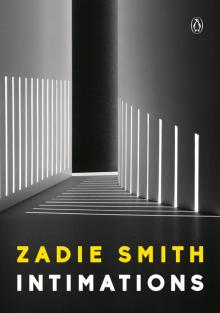 Intimations
Intimations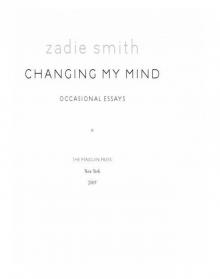 Changing My Mind
Changing My Mind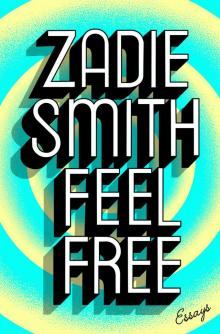 Feel Free
Feel Free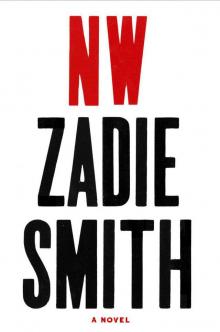 NW: A Novel
NW: A Novel